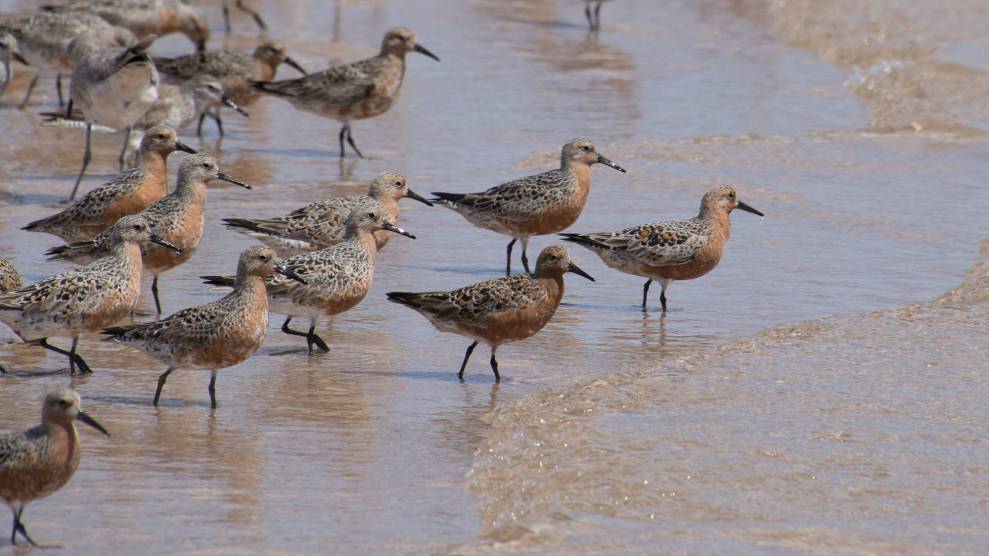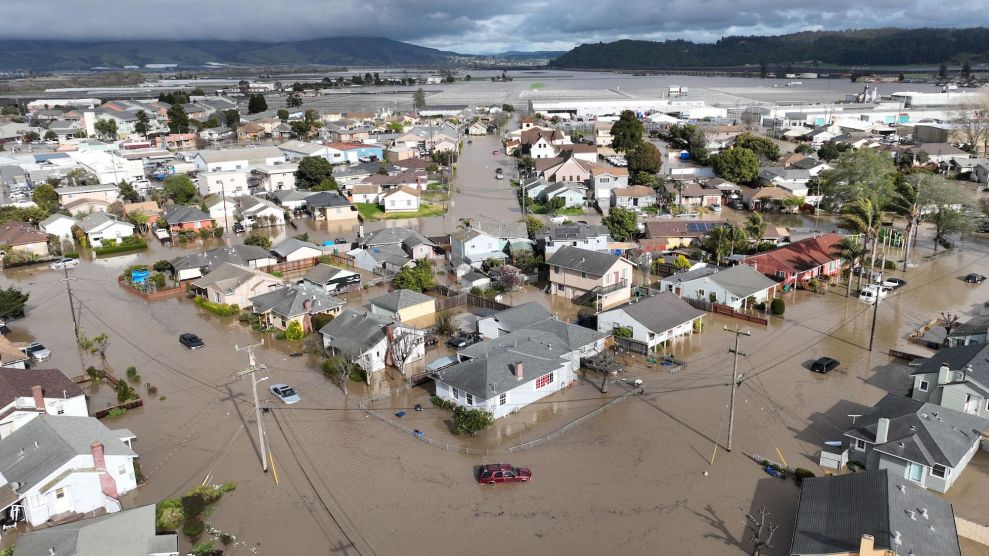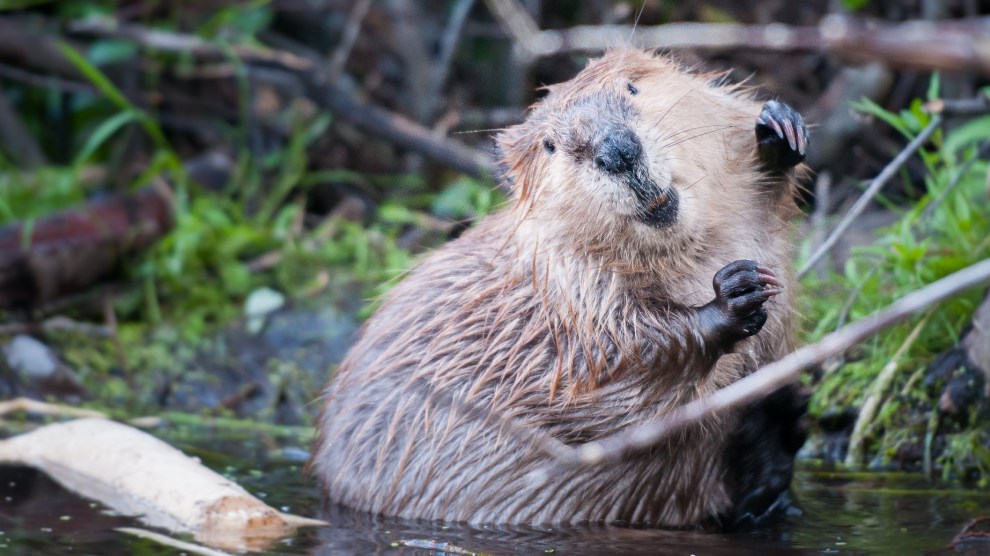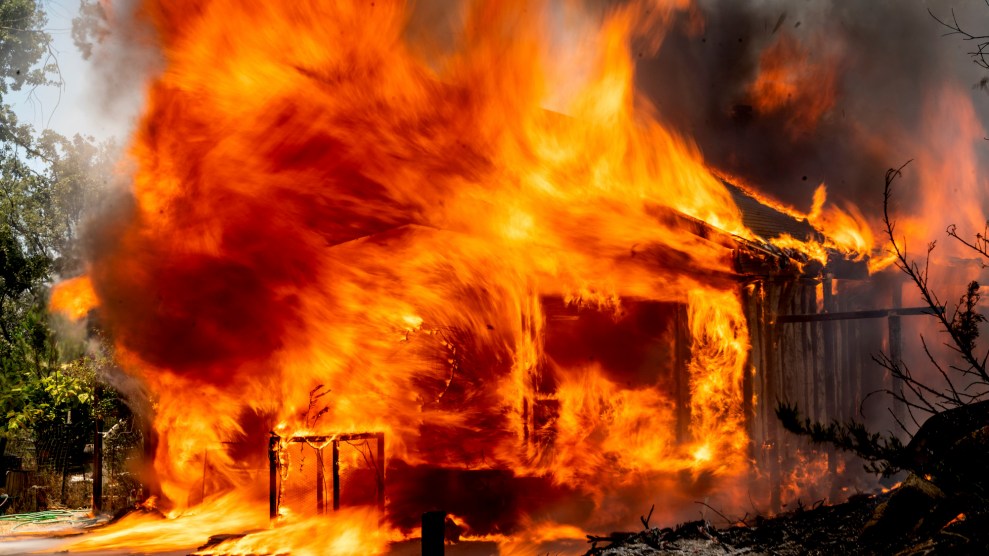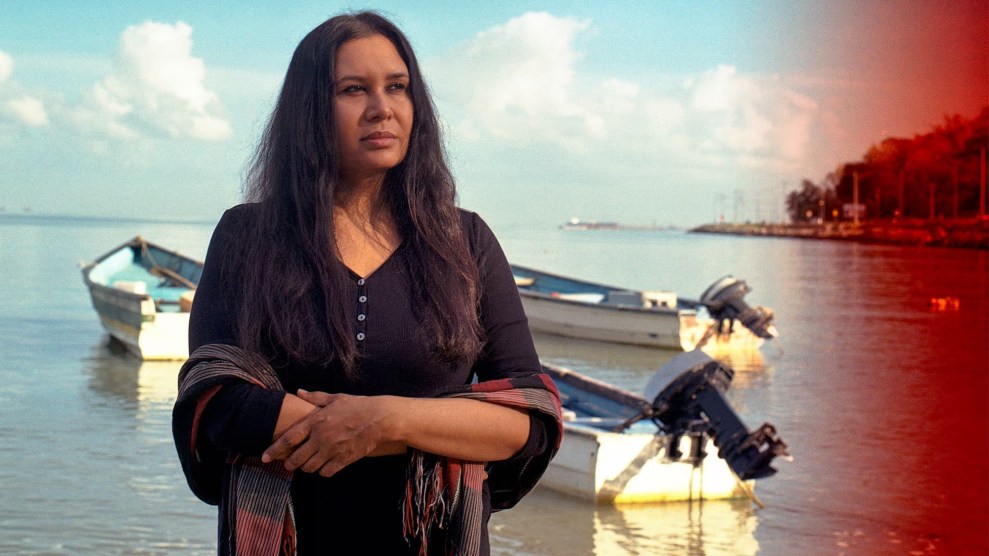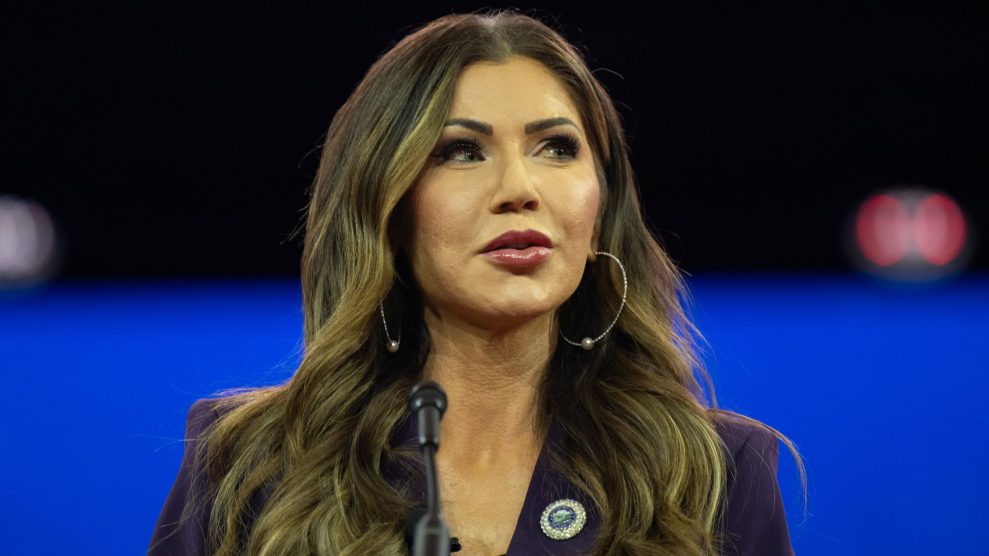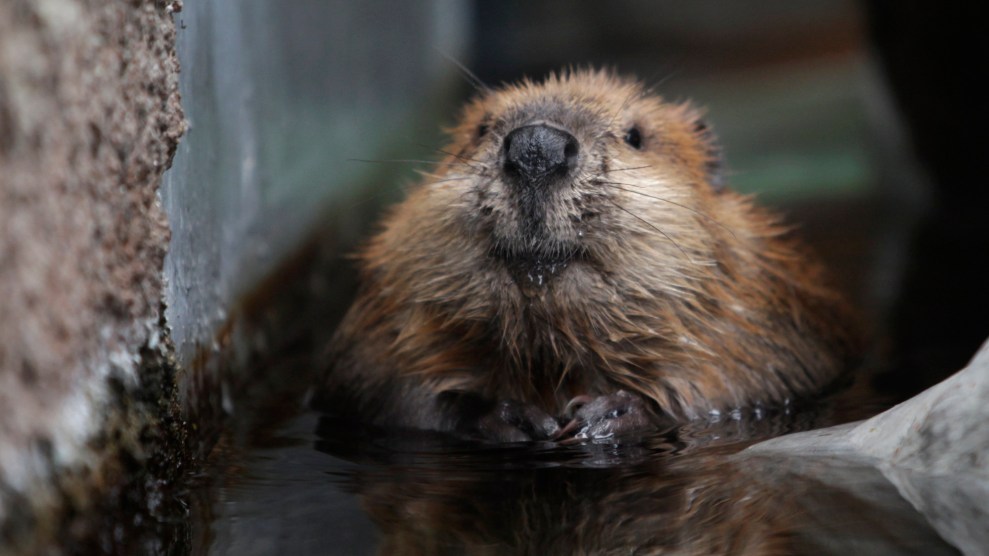
A beaver in Redding, California. Redding Record Searchlight/Zuma
This story was originally published by Wired and is reproduced here as part of the Climate Desk collaboration.
For the first time in four centuries, it’s good to be a beaver. Long persecuted for their pelts and reviled as pests, the dam-building rodents are today hailed by scientists as ecological saviors. Their ponds and wetlands store water in the face of drought, filter out pollutants, furnish habitat for endangered species, and fight wildfires. In California, Castor canadensis is so prized that the state recently committed millions to its restoration.
While beavers’ benefits are indisputable, however, our knowledge remains riddled with gaps. We don’t know how many are out there, or which direction their populations are trending, or which watersheds most desperately need a beaver infusion. Few states have systematically surveyed them; moreover, many beaver ponds are tucked into remote streams far from human settlements, where they’re near-impossible to count. “There’s so much we don’t understand about beavers, in part because we don’t have a baseline of where they are,” says Emily Fairfax, a beaver researcher at the University of Minnesota.
But that’s starting to change. Over the past several years, a team of beaver scientists and Google engineers have been teaching an algorithm to spot the rodents’ infrastructure on satellite images. Their creation has the potential to transform our understanding of these paddle-tailed engineers—and help climate-stressed states like California aid their comeback. And while the model hasn’t yet gone public, researchers are already salivating over its potential. “All of our efforts in the state should be taking advantage of this powerful mapping tool,” says Kristen Wilson, the lead forest scientist at the conservation organization the Nature Conservancy. “It’s really exciting.”
The beaver-mapping model is the brainchild of Eddie Corwin, a former member of Google’s real-estate sustainability group. Around 2018, Corwin began to contemplate how his company might become a better steward of water, particularly the many coastal creeks that run past its Bay Area offices. In the course of his research, Corwin read Water: A Natural History, by an author aptly named Alice Outwater. One chapter dealt with beavers, whose bountiful wetlands, Outwater wrote, “can hold millions of gallons of water” and “reduce flooding and erosion downstream.” Corwin, captivated, devoured other beaver books and articles, and soon started proselytizing to his friend Dan Ackerstein, a sustainability consultant who works with Google. “We both fell in love with beavers,” Corwin says.
Corwin’s beaver obsession met a receptive corporate culture. Google’s employees are famously encouraged to devote time to passion projects, the policy that produced Gmail; Corwin decided his passion was beavers. But how best to assist the buck-toothed architects? Corwin knew that beaver infrastructure—their sinuous dams, sprawling ponds, and spidery canals—is often so epic it can be seen from space. In 2010, a Canadian researcher discovered the world’s longest beaver dam, a stick-and-mud bulwark that stretches more than a half-mile across an Alberta park, by perusing Google Earth. Corwin and Ackerstein began to wonder whether they could contribute to beaver research by training a machine-learning algorithm to automatically detect beaver dams and ponds on satellite imagery—not one by one, but thousands at a time, across the surface of an entire state.
After discussing the concept with Google’s engineers and programmers, Corwin and Ackerstein decided it was technically feasible. They reached out next to Fairfax, who’d gained renown for a landmark 2020 study showing that beaver ponds provide damp, fire-proof refuges in which other species can shelter during wildfires. In some cases, Fairfax found, beaver wetlands even stopped blazes in their tracks. The critters were such talented firefighters that she’d half-jokingly proposed that the US Forest Service change its mammal mascot—farewell, Smoky Bear, and hello, Smoky Beaver.
Fairfax was enthusiastic about the pond-mapping idea. She and her students already used Google Earth to find beaver dams to study within burned areas. But it was a laborious process, one that demanded endless hours of tracing alpine streams across screens in search of the bulbous signature of a beaver pond. An automated beaver-finding tool, she says, could “increase the number of fires I can analyze by an order of magnitude.”
With Fairfax’s blessing, Corwin, Ackerstein, and a team of programmers set about creating their model. The task, they decided, was best suited to a convolutional neural network, a type of algorithm that essentially tries to figure out whether a given chunk of geospatial data includes a particular object—whether a stretch of mountain stream contains a beaver dam, say. Fairfax and some obliging beaverologists from Utah State University submitted thousands of coordinates for confirmed dams, ponds, and canals, which the Googlers matched up with their own high-resolution images to teach the model to recognize the distinctive appearance of beaverworks. The team also fed the algorithm negative data—images of beaverless streams and wetlands—so that it would know what it wasn’t looking for. They dubbed their model the Earth Engine Automated Geospatial Elements Recognition, or EEAGER—yes, as in “eager beaver.”
Training EEAGER to pick out beaver ponds wasn’t easy. The American West was rife with human-built features that seemed practically designed to fool a beaver-seeking model. Curving roads reminded EEAGER of winding dams; the edges of man-made reservoirs registered as beaver-built ponds. Most confounding, weirdly, were neighborhood cul-de-sacs, whose asphalt circles, surrounded by gray strips of sidewalk, bore an uncanny resemblance to a beaver pond fringed by a dam. “I don’t think anybody anticipated that suburban America was full of what a computer would think were beaver dams,” Ackerstein says.
As the researchers pumped more data into EEAGER, it got better at distinguishing beaver ponds from impostors. In May 2023, the Google team, along with beaver researchers Fairfax, Joe Wheaton, and Wally Macfarlane, published a paper in the Journal of Geophysical Research Biogeosciences demonstrating the model’s efficacy. The group fed EEAGER more than 13,000 landscape images with beaver dams from seven western states, along with some 56,000 dam-less locations. The model categorized the landscape accurately—beaver dammed or not—98.5 percent of the time.
According to Fairfax, EEAGER’s use cases are many. The model could be used to estimate beaver numbers, monitor population trends, and calculate beaver-provided ecosystem services like water storage and fire prevention. It could help states figure out where to reintroduce beavers, where to target stream and wetland restoration, and where to create conservation areas. It could allow researchers to track beavers’ spread in the Arctic as the rodents move north with climate change; or their movements in South America, where beavers were introduced in the 1940s and have since proliferated. “We literally cannot handle all the requests we’re getting,” says Fairfax, who serves as EEAGER’s scientific adviser.
The algorithm’s most promising application might be in California. The Golden State has a tortured relationship with beavers: For decades, the state generally denied that the species was native, the byproduct of an industrial-scale fur trade that wiped beavers from the West Coast before biologists could properly survey them. Although recent historical research proved that beavers belong virtually everywhere in California, many water managers and farmers still perceive them as nuisances, and frequently have them killed for plugging up road culverts and meddling with irrigation infrastructure.
Yet those deeply entrenched attitudes are changing. After all, no state is in more dire need of beavers’ water-storage services than flammable, drought-stricken, flood-prone California. In recent years, thanks to tireless lobbying by a campaign called Bring Back the Beaver, the California Department of Fish and Wildlife has begun to overhaul its outdated beaver policies. In 2022, the state budgeted more than $1.5 million for beaver restoration, and announced it would hire five scientists to study and support the rodents. It also revised its official approach to beaver conflict to prioritize coexistence over lethal trapping. And, this fall, the wildlife department relocated a family of seven beavers onto the ancestral lands of the Mountain Maidu people—the state’s first beaver release in almost 75 years.
It’s only appropriate, then, that California is where EEAGER is going to get its first major test. The Nature Conservancy and Google plan to run the model across the state sometime in 2024, a comprehensive search for every last beaver dam and pond. That should give the state’s wildlife department a good sense of where its beavers are living, roughly how many it has, and where it could use more. The model will also provide California with solid baseline data against which it can compare future populations, to see whether its new policies are helping beavers recover. “When you have imagery that’s repeated frequently, that gives you the opportunity to understand change through time,” says the Conservancy’s Kristen Wilson.
